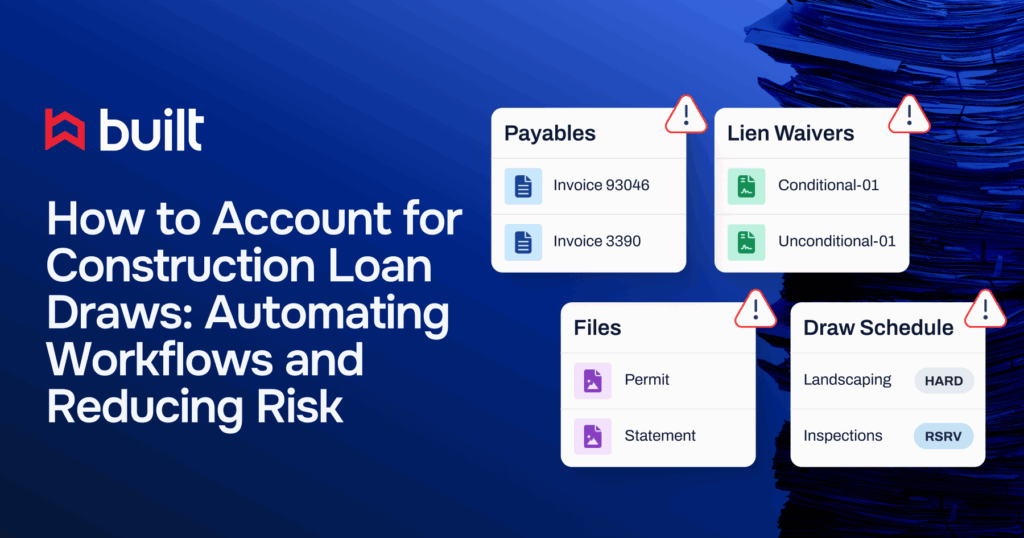
What Is a Progress Payment?

In construction, there are many ways to structure billing and payments. The chosen model can vary depending on the project type, its complexity, and the overall cost. Let’s look at the different project billing models, some of which rely on progress payments, and how each one works.
What is a progress payment?
Progress payments for construction projects are made as the job progresses and reaches predetermined milestones. These checkpoints are determined ahead of time and the lender, owner, and contractor all agree upon them. These details are also usually spelled out in the contract.
Payments are typically based on a percentage of completed work, like when a project reaches 25%, 50%, and 75% completion, or when certain parts of the project are done. For instance, a payment could occur when the below-grade waterproofing work is completed or when the exterior is dried in. Sometimes progress payments can be based on time and set to be paid on a monthly or bimonthly basis.
Common types of construction pricing
Let’s consider what progress payments might look like in the most common construction pricing models:
Time & materials (T&M). The time and material pricing model breaks down all labor and material costs used up to that point in the project. This requires thorough tracking and precise record-keeping, often with job cost reports accounting for all project costs. This model is often used for projects where the scope is unclear and may change.
While the T&M model provides contractors with assurance they’ll be paid for the actual time worked and cost of materials, it can create uncertainty for lenders and project owners around the total project cost. Often a “not-to-exceed” clause will be included in a T&M contract so owners and lenders have insight into the maximum cost.
Lump-sum pricing. The lump-sum pricing model requires a contractor to settle on a set price to complete the work. Sometimes this means there’s a lump-sum amount that’s billed at the project’s end. Depending on the project length, the lump sum may also be split into progress payments made on a regular basis during construction.
Whether billed upon completion or incrementally as the project progresses, the lender can feel confident that the costs will not change. This model is ideal for projects that are smaller in scope and more easily estimated with fewer variables. Because the contractor isn’t typically required to submit itemized invoices, there’s not much transparency into actual project costs and the contractor’s profit margin.
Cost-plus pricing. The cost-plus model covers the actual costs of the project’s labor and materials and then includes an agreed-upon profit amount that’s often a percentage of the actual costs. This method requires thorough documentation to verify the exact project costs incurred. Cost-plus pricing is often paid based on progress, when specific milestones or completion percentages are met.
The cost-plus model can be risky for owners and lenders because the more costly the materials, the larger the amount paid to the contractor. This amount can be kept in check by limiting how much a contractor can spend on the project.
Unit pricing. In the unit-pricing model, costs are established ahead of time for a specific amount of work. These costs will include labor, materials, and other predetermined variables. Work is billed per unit based on the number of units completed during an agreed-upon time frame, often monthly.
This model is usually seen in public works projects. It creates transparency by keeping billing simple and eliminating disputes, since the costs are agreed upon at the project’s start. Unit pricing can present challenges because the project scope could change over time. The unit cost could also change depending on price increases and inflation. This unpredictability can make it hard for a lender and owner to stay fully aware of the total financing amount needed.
Challenges of financing progress payments
Progress payments in construction can be difficult to finance because they’re subject to disputes—like if there’s no clear documentation or proof that the work was completed to satisfaction. After all, many lending agreements call for certain timelines or percentages of completed work, and the lender must confirm the project is meeting these requirements before making these progressive payments.
Any disputes can delay the release of payment to the parties who need it, causing frustration over expected payment amounts. Such situations can even lead to subcontractors pausing work until they’re paid, creating tension on site and throwing schedules off track.
It can be time-consuming and challenging to manage the many moving parts of a construction loan, which is why it’s more important than ever to have a technology platform that streamlines the communication and payment process. Consider a solution that can help make any progress payments efficient and painless.








